“FROM THERE TO HERE”
MEMBERS INTERVIEW IN THE SEA
Dr. Karen Souter, Previous SEA President
What made you join SEA?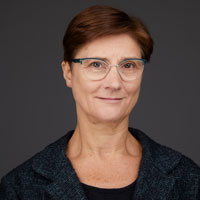
“FROM THERE TO HERE”
MEMBERS INTERVIEW IN THE SEA
Dr. Karen Souter, Previous SEA President
What made you join SEA?
OXYGEN by Carol Cassella
As we move from the short days of winter to the longer and warmer days of summer, it also seems that time has expanded and this may be the perfect time to check out some good fiction. The book is written by a physician and the plot is something to which we can all relate. The story is set in Seattle and follows the emotional roller-coaster of an anesthesiologist who loses a young ‘special needs’ patient to an intraoperative catastrophe. The author narrates in great detail the legal and emotional issues associated with the death of a patient. Dr Marie Heaton, the protagonist, who is at the top of her game as an anesthesiologist, a brilliant and caring physician, is forced to take a look at her own insecurities as a physician. Something goes terribly wrong during a routine pediatric case and forces her to re-evaluate her life, her truths, her friends, family and her world. The story gives the reader an understanding of the conflict she feels between empathizing with the mother of the patient while at the same time coming to terms with what this incident means to her career as a physician.
Almost ten years ago (Dec 14, 2012), at Sandy Hook Elementary school, the nation witnessed one of the deadliest mass shootings in US history utilizing a semi-automatic rifle. This past couple of weeks, we as educators witnessed the death of two colleagues and the death of 19 children in Uvalde, TX, and the death of two physicians and members of their team in Tulsa, OK. As diversity officers, on May 14, 2022, we witnessed the loss of ten people in what authorities described as “racially motivated violent extremism” in Buffalo, NY (Associated Press, May 14, 2022).
We are saddened. We are fatigued. We are enraged.
Thrive: Ariana Huffington
This year has been unlike any other! For those of us working in healthcare the stress from the job as well as keeping ourselves and our families safe has led to unprecedented levels of burnout. It also led many of us to re-examine our lives to define what is meaningful and what is not. This book by Ariana Huffington offers insights that could help us on this journey.
I think we all like to believe that anesthesiology training has changed by leaps and bounds over the last decades, but truthfully the essential core of our educational paradigm remains the same – the apprenticeship model. Yes, anesthesiology residents spend time learning about quality improvement, doing research, and treating rare complications in high fidelity simulators. But add up all the hours and days of a typical anesthesiology residency and the bulk of that time will be spent with a patient and the attending guiding their care. This relationship creates an environment where the influence of the attending physician can be of outsized importance. And this is true not just with respect to the development of clinical competence but also the modeling of professionalism and communication skills.
One of my favorite people to follow on social media is an ophthalmologist/comedian, Dr. Glaucomflecken. His TikTok videos expertly poke fun at a variety of medical specialty stereotypes, and anesthesiology is no exception. While exaggerated, most stereotypes have a kernel of truth. In Glaucomflecken’s world, the shower-capped anesthesiologist frequently hides behind the blue drapes and avoids meaningful conversation with the surgical team. A recent editorial published in Anesthesiology, “The Accreditation Council for Graduate Medical Education [ACGME] Special Report on Clinical Learners in Procedural Environments: Several Elephants in a Very Small Room,”1 sums up the not-so-funny reality: “Why are trainees communicatively inept? Because their teachers are. They are just mimicking what they see…. Anesthesiology, nursing, and surgery remain siloed communities…frighteningly so!” The potential impact of improved communication on patient safety and outcomes is regarded as self-evident. Closed loop communication, effective handoffs during transitions of care, and creating shared mental models can only serve to improve clinical care.
1. When and why did you join SEA?
It’s been longer than I’d care to admit. Over ten years now. I have always been interested in teaching skills to small groups or individuals, not so much in the lecturing part. A mentor of mine sent me a note informing me about the Seattle meeting in 2009 and suggested I should attend. I had been a member of SEAUK before I moved across the Atlantic to Colorado.
2. What skills do you have that you use to contribute to this organization?
Skills…hmm. I get things done. Is that a skill or a superpower?
Throughout 2022 we will be celebrating the fifth anniversary of when The Journal of Education in Perioperative Medicine (JEPM) became archived on PubMed Central (PMC). This could not have happened without the support of you, the SEA members, and we want to celebrate this landmark achievement with you the entire year. Landing on PMC was significant for the Journal in so many ways. For starters, the recognition of the Journals new status began a growth trajectory of manuscript submissions that has surpassed one hundred manuscripts in 2021. That’s up from fewer than ten in 2015! Our published articles get significant viewing. One of our most popular published articles is “How to Write Well-Defined Learning Objectives,” by SEA member Debnath Chatterjee, MD & Janet Corral, PhD. This piece has had over 32,000 total requests including more than 2,700 full-PDF downloads; it has also been cited in twelve other peer-reviewed articles including five in 2021 alone! None of this growth would have been possible without our incredibly talented and hard-working team of associate editors including Phillip S. Adams, DO; Eric Heinz, MD, PhD; Ryan Keneally, MD; Timothy Long, MD; Susan M. Martinelli, MD; Annette Mizuguchi, MD, PhD, MMSc, FASE; Deborah A. Schwengel, MD, MEHP; Jed Wolpaw, MD, MEd; & Lara Zisblatt, EdD, MA, PMME. On the administrative side, we owe a great debt of gratitude to Megan Sage, our coordinator in the SEA office, and Heather Chaney, our new Managing Editor with Allen Press.
So what can you do to join the celebration of the anniversary? First, we are always looking for talented reviewers. Giving your time and talents as a peer-reviewer is a tremendous service to the society, the Journal, and of course, our specialty. Second, you can submit your high-quality education manuscripts to the Journal. Many are published, but if not, our talented reviewers and associate editors will provide you with thoughtful feedback that you can incorporate when you resubmit elsewhere. Your education research manuscript will have been reviewed by some of the most talented minds in the business, setting them up for success down the road. Last, you can celebrate with us by attending the SEA spring and fall meetings. The Journal will be featured in a number of venues at each of our meetings including a reappearance of our “reviewing workshop”, which was so well received in the past.
It was an honor to host SEA’s 2021 Fall Meeting on Advocacy in Education and Academic Departments. This meeting has taken on several different forms over the past two years and endured the challenges of the pandemic. I hope you all enjoyed and benefited from our excellent speakers and workshop presentation.
Dr. Alan Schwartz opened the meeting with the McLeskey lecture and gave us a broad overview of the Politics of Medical Education. Who are the key players? How are scarce resources managed? What are the political interest of each stake holder? How do we apply this in our everyday interactions within our residency? Dr. Schwartz is an incredibly engaging and innovated educator, and we are grateful to have had him as our keynote speaker.
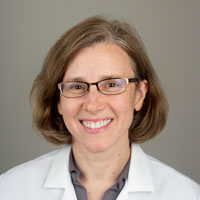 |
|
Stephanie B. Jones, MD
SEA President
|
Happy summer! As we embark upon a new academic year, things are a little different than usual. The challenge of introducing new trainees to the perioperative environment remains our perpetual summer pastime. What has changed is the lens through which we view teaching and learning, having just emerged from the trying circumstances of the last year or so.
This statement is issued in response to the United States Executive Order entitled, “Executive Order on Combating Race and Sex Stereotyping,” issued on September 22, 2020.
The Society for Education in Anesthesia (SEA) is a society devoted to excellence in patient care through education. We value diversity, equity, and inclusion, and strive to promote these principles with our actions and teachings.
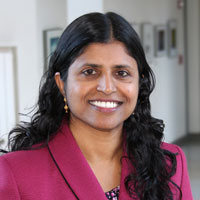 |
|
Viji Kurup MD
Professor
Vice Chair for Medical Education Yale University
|
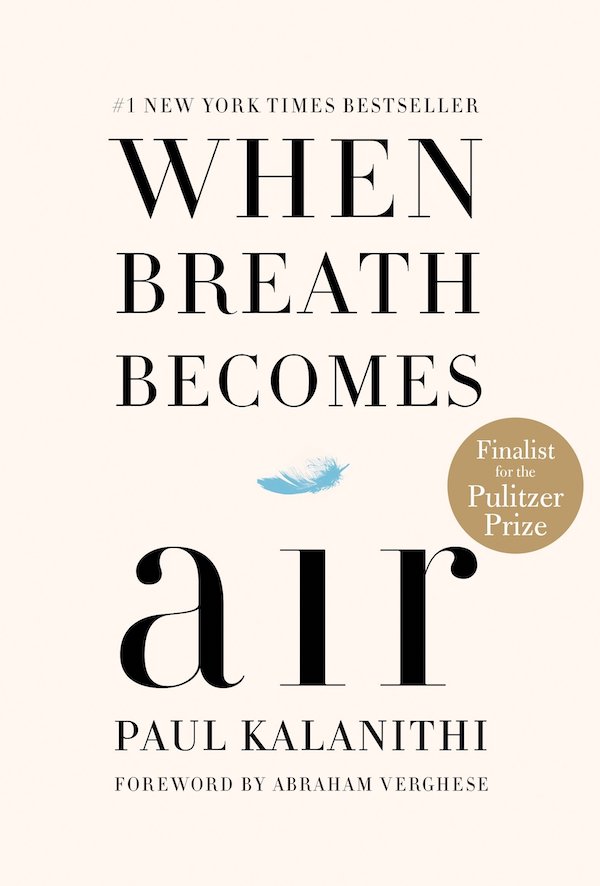 |
When Breath Becomes Air: Paul Kalanithi
I came upon Paul Kalanithi’s When Breath Becomes Air through a community read program organized by Yale University. The title intrigued me, and I picked up the book. I was stunned by the sheer honesty and raw emotion that the author poured into this book. Kalanithi’s reflection on death and dying and his re-evaluation of life resonated in this year of the pandemic when we have done the same.
Kalanithi was a neurosurgeon who trained at Yale and Stanford. In the last year of neurosurgical residency, he was forced to confront a devastating diagnosis of lung cancer. Through his writing, we accompany him on that journey as we see through his eyes and bear witness to his inner turmoil when the doctor becomes a patient. In a culture that talks about death and dying in hushed tones, Kalanithi’s willingness to let the reader into his life and his mind is a gift that must be received with gravity. It highlights to the readers both the mortality of the subject as well as the immortality of his work.
The struggle that the author experiences when moving between the roles of doctor and patient is relatable. His story is similar to countless other medical professionals who ignore small signs and symptoms and chalk it up to fatigue. We put off medical visits for when we have more time. It was only when he could ignore his symptoms no longer that he went to seek medical help and found himself in a position that he had not expected. He moves between the point of views of the patient and doctor fluidly taking the reader with him. He talks about dealing with loss of control of your life when faced with the devastating diagnosis of Stage IV lung cancer. He also uses his illness to bridge his love for medicine and literature to describe his journey until the last phases where the book ends abruptly when his condition takes a turn for the worse.
As we reflect on this year, we are heartened by the verdict handed down in the George Floyd murder trial. It was a month prior to George Floyd’s death that SEA formed its Taskforce on Diversity, Equity, and Inclusion (DE&I). Both anniversaries speak of the work that remains to be done in order to live in a society where diversity is valued, equity is commonplace, and inclusion is the norm. Since its inception, the taskforce has been very busy – a testament to the times we live in.
The Taskforce on DE&I collaborated with multiple anesthesia component societies as well as freestanding organizations. In addition, we have reached out both to anesthesiology residents at multiple programs and to medical students through the Student National Medical Association who will be applying for residency in anesthesiology.
The degree to which individuals are underrepresented in medicine, and specifically in academic medicine, is significant and concerning. This representation gap is especially notable in leadership positions. This also holds true in the American Society of Anesthesiologists (ASA), as evidenced by the 2017 survey conducted by Toledo et al regarding diversity in the leadership of this organization.1 Another publication in Medscape, using US Census Bureau criteria, reports the vast majority (70%) of anesthesiologists identified as White/Caucasian, followed in prevalence by Asian Indian (7%), Chinese (5%), Hispanic/Latino (4%), and Black/African American (3%).2 Women are underrepresented among anesthesiologist among all these groups, with an exception noted in the Black/African American group.2 A recent review article from Kenevan et al reports a slow increase in the representation of women in anesthesiology from 22% in 2007 to 24.8% in 2013. However, this still lags behind the general medical workforce, comprising 38% women.3
The SEA Spring Annual Business Meeting is scheduled for Saturday, April 17, 2021 at 4:50pm (Eastern) during the SEA Spring Meeting to be held via Zoom Webinar.
Items on the agenda include:
 |
|
Viji Kurup MD
Professor
Vice Chair for Medical Education Yale University
|
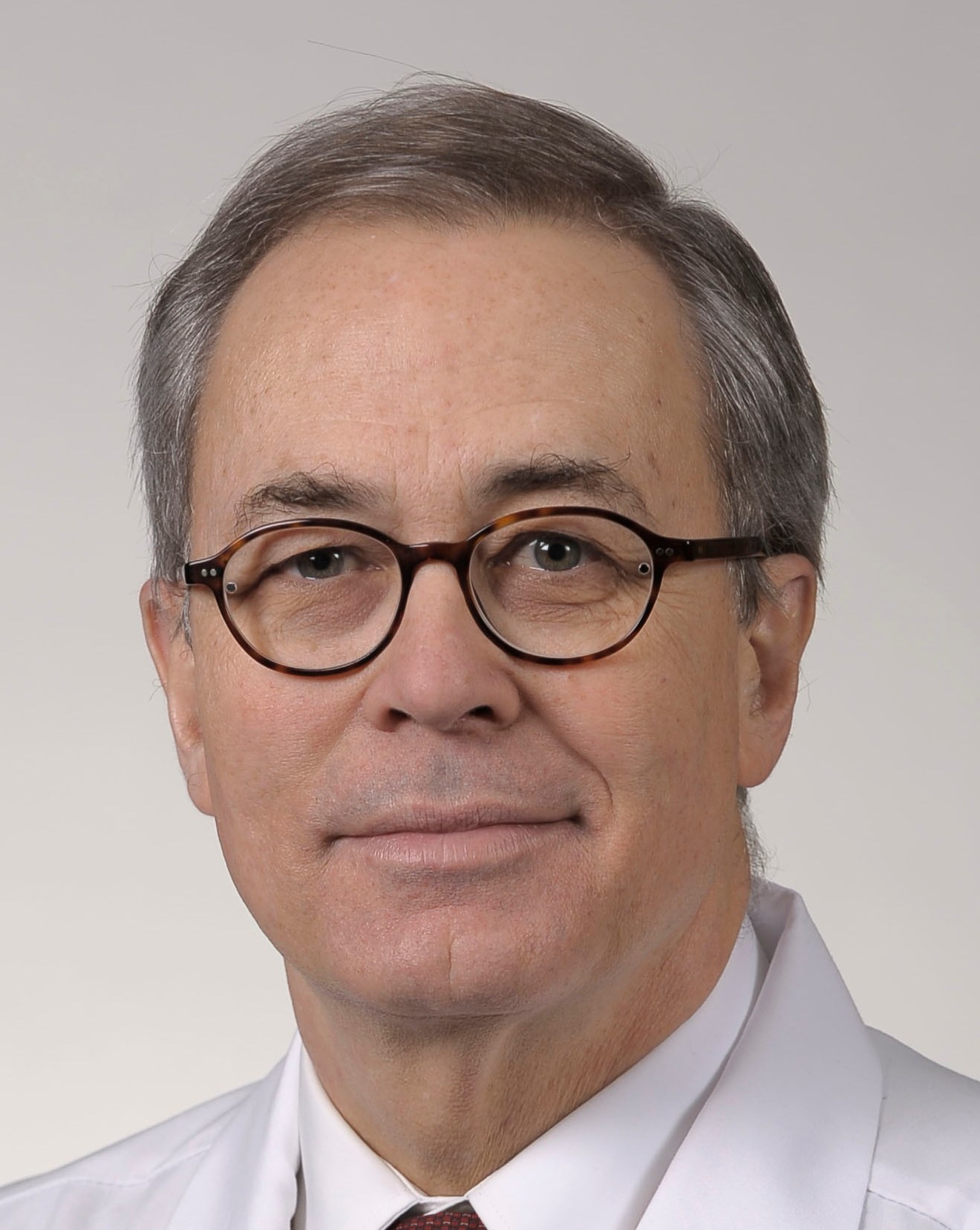 |
|
Michael Sandison, MD
Professor Emeritus
Albany Medical College
|
This year, the Society for Education in Anesthesia is commemorating its 35th anniversary. It was unfortunate we could not all be together in Washington, D.C. to celebrate. Nevertheless, we were so happy to see everyone who attended SEA’s Fall Meeting 2020 in its first ever virtual format. The meeting’s theme was “Educational Scholarship,” as we described how anesthesiology educators can create publications or other scholarly output from their curricular and educational efforts. We had an informative program full of amazing speakers this year, and we would like to share a summary of highlights from the meeting.
The first section of the meeting focused on “Why and Where to Publish Your Educational Work.” Dr. Grace Huang kicked-off the meeting by delivering the McLeskey Lecture, in which she encouraged us to make a habit of incorporating writing into our professional lives. She emphasized that scholarship is within everybody’s reach and that there are opportunities to publish in education beyond original research projects. Next, we had a panel session on non-traditional publishing venues, during which Dr. Jed Wolpaw described how podcast development can be incorporated into your curriculum vitae and assist with promotion. He also encouraged others, especially those in subspecialty practice, to develop their own podcasts. Dr. Fei Chen presented us with innovative methods for the peer review process and how such innovations address some of the challenges in traditional review and metascience. She left us with the hope that we will see the application of these innovations in anesthesiology journals in the near future. The final speaker on the panel, Dr. Steven Shafer, provided an editor’s overview of the ASA Monitor and introduced GitHub for non-traditional publication strategies. Dr. Shafer encouraged interested people to contact the editors of ASA Monitor with innovative ideas and expressed interest in a potential medical education column.
The speakers of the second section, Dr. Amy Miller Juve, Dr. Lara Zisblatt, and Dr. Amy DiLorenzo, described the numerous roles non-physician educational specialists can play in an anesthesiology department. Dr. David Zvara wrapped up the section, and first day of the meeting, with a chair’s perspective on how you can convince your chair to hire a non-physician educator.
We started the second day of the meeting discussing how to publish your educational work. Dr. Lara Varpio gave us several great pieces of advice on creating an educational research paper, including how to frame your paper in the context of existing literature and how to make good use of your cover letter. Next, we received some fantastic insights and perspectives from two journal editors, Dr. Ed Nemergut (A&A) and Dr. Jeff Berger (JEPM), regarding practical tips and common pitfalls in educational writing. They each discussed several attributes of high-quality educational manuscripts and emphasized how effective design and writing can facilitate publication.
To wrap up the meeting, we heard a very special presentation from Dr. Melissa Davidson and Dr. Stephen Kimatian, the SEA Duke Award Recipients for 2020. They both have been instrumental in the success of the SEA Workshop on Teaching and are extremely deserving of this prestigious award.
Overall, the first virtual meeting of the SEA was a success. The feedback from attendees regarding the content, speakers, and format of the meeting was highly positive. More than 100 SEA members participated in each day of the meeting, many of whom found the virtual format very accessible. Additionally, the mixture of pre-recorded videos, live presentations, and live Q&A made for a well-rounded variety of formats. Although we would have preferred to be together at an in-person meeting we were still able to have a well-attended meeting, where SEA members received valuable education and professional development.
Welcome to the Society for Education in Anesthesia (SEA) website! 2020. Certainly an interesting time to take on the role of president of the Society for Education in Anesthesia
 |
|
Stephanie B. Jones, MD
SEA President
|
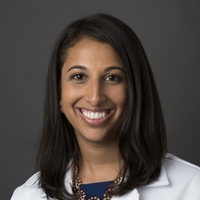 Monica Bhutiani MD
|
| Brian Gelfand MD |
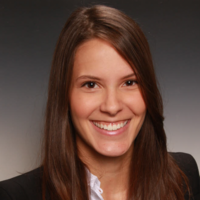 Meredith Kingeter MD
|
The transition from intern year to clinical anesthesiology represents an exciting but challenging time. Historically, our program utilized June of PGY1 year to prepare interns to work in the operating room. During this month, a hands-on and didactic educational format facilitated residents’ progression from paired oversight to semi-solo to eventually solo status by July 1st of CA-1 year.
Responding to local and national concerns of resident burnout, especially during the current pandemic, we restructured the program with emphasis on wellness and burnout prevention, while still ensuring intraoperative competence based upon established metrics. We incorporated strategies including paired intraoperative mentorship with predictable and assured OR relief, evening online lectures in interactive PBLD format, and resilience workshops.
During this transition period both intraoperative as well as social and emotional supports are imperative to decrease burnout and bolster mental wellbeing. Traditionally, interclass friendship and camaraderie vital for the forthcoming clinical years stems organically from frequent social interactions both within and outside the hospital. However, due to infectious concerns, many of those opportunities are not possible this year. With some creativity, we supplemented their curricula with online weekly social hours to facilitate debriefing, decompression, and growth as a class as well as a structured 1:1 peer mentorship program that paired rising CA-1 residents with senior mentors to provide psychosocial support, encourage self-reflection, and bolster professional connectedness.
decrease burnout and bolster mental wellbeing. Traditionally, interclass friendship and camaraderie vital for the forthcoming clinical years stems organically from frequent social interactions both within and outside the hospital. However, due to infectious concerns, many of those opportunities are not possible this year. With some creativity, we supplemented their curricula with online weekly social hours to facilitate debriefing, decompression, and growth as a class as well as a structured 1:1 peer mentorship program that paired rising CA-1 residents with senior mentors to provide psychosocial support, encourage self-reflection, and bolster professional connectedness.
Overall, these changes were implemented for the well-being of our residents, especially in the current climate shaped by COVID-19. Although the impetus for these changes was the pandemic, we believe resident wellness represents a needed priority even in times of normalcy, and we will continue to build upon these changes towards a programmatic paradigm shift of greater resident support and wellbeing.
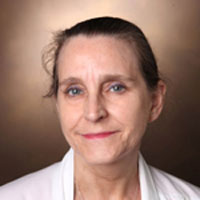
L. Jane Easdown, MD
A few years ago, the SEA Board of Director’s launched an outreach program to contact other anesthesiology societies to offer workshops and share resources and educational material. This outreach program is led by Dr. Deb Schwengel. One of the advantages of the outreach has been learning about the other societies and what they create and offer to members. The Society of Neurosurgical Anesthesia and Critical Care (SNACC) is one of the societies with a strong education focus. SEA members may benefit from familiarity with SNACC’s offerings, which can help both training programs individual trainees.
SNACC membership comprises neuroscientists, neurointensivists and neuroanesthesiologists. The society was founded in 2007 and has traditionally had a one-day meeting ahead of the ASA, which made it very difficult to SEA members to attend. SNACC had its first freestanding meeting in September 2019, which allowed for additional days of programming. For the first time, a group of SEA members could attend the full meeting! SNACC leadership was keen to work with SEA to provide new experiences for their membership. Through this relationship we have learned that SNACC has many educational resources for use for the general public.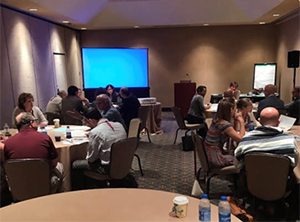
SEA/SNACC Workshop- SNACC invited SEA members to conduct a workshop for the September 2019 meeting, and from several topics offered they chose curriculum development. Deb Schwengel organized a workshop with Karen Souter, Shobana Rajan and me as presenters and. The workshop was fully subscribed including many of the SNACC officers. Several attendees were developing a new rotation, so this workshop was very timely. We presented the Kern system for curriculum development. This was highly successful, and we have been asked to provide other topics in the future.
The SNACC website- For those of us that teach in neuroanesthesia rotations there is a wide variety of educational material to be found on the SNACC website, and it is open to the public. Three sections are worth highlighting: